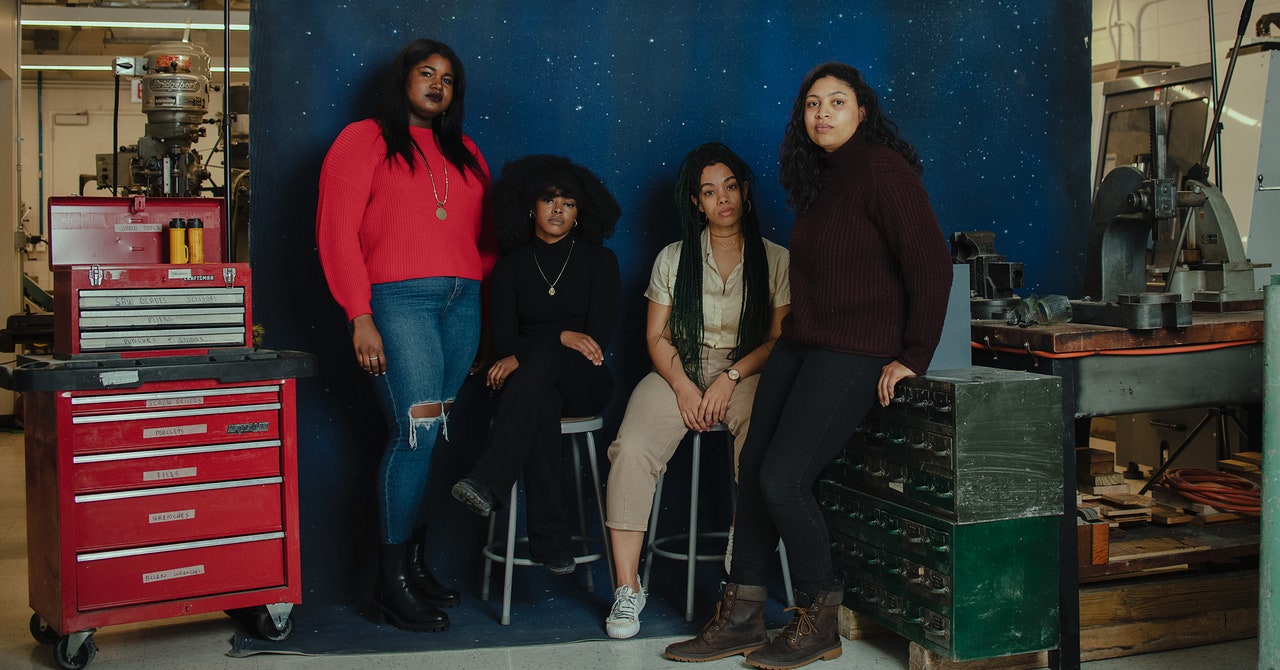
She decided to study physics. It was, in a way, good timing—a Black American woman had just become the first of her kind to earn a physics PhD, back in Greene-Johnson’s home state. At Stanford, Greene-Johnson was the only Black student in her major, but that didn’t surprise her. What did was the presence of six Black PhD students in the department. “I had brothers and sisters galore,” she told me.
She’d turn to them whenever she was struggling with a homework problem or needed a friendly face. When she told her academic adviser she was considering a master’s degree, he encouraged her to reach higher. (That adviser, incidentally, was a white man whose efforts helped Stanford, over the next three decades, produce numerous Black American physicists with PhDs.)
Five years later, Greene-Johnson returned to the Midwest to begin graduate school at UChicago. There were two other women in her class, both white. No other Black grad students were in the department, despite the university’s being situated in the city’s historically Black South Side.
She joined a research group at the intersection of physics and chemistry. She recalls her adviser greeting her by saying, “I wanted the other one,” referring to one of the white women in her class. “But you’ll do.” In the following months, Greene-Johnson barely heard from him; he preferred to relay information through his postdoctoral researcher. At the end of one group meeting, in which their adviser was on speakerphone, the postdoc asked, “Is there anything you want to say to the students?” The adviser simply hung up.
It was a poor environment for everyone, Greene-Johnson says, but as a Black woman she felt she was “someone to be tolerated.” When she earned the third-highest score on her qualifying exams, she remembers her adviser reacting with shock at her success.
Nevertheless, he ended up kicking her out of his lab, on the premise that her research wasn’t moving fast enough. “It was basically, ‘Clear your desk, and good luck,’” she recalls. Greene-Johnson didn’t protest. She waited until the rest of the students left for lunch and quietly packed up her things.
Humiliated, she hid out in her apartment. She was at a loss for what to do next. She also learned that her adviser had tried to get her fellowship taken away, which would have made it impossible for her to continue in another lab. After more than a month away from school, Greene-Johnson decided to regroup. She grabbed coffee with the postdoc, who had recently accepted a position at the nearby Argonne National Laboratory. “You’re a good scientist,” he told her. “Come work for me”—and leave the PhD program behind.
Those words were the validation she needed. More than anyone else, that postdoc had known Greene-Johnson and the culture of their previous lab group well enough to recognize that the problem had been with their adviser—not with her. But she still wanted to earn her degree. I’m not leaving until I have to, she remembers thinking.
For the next few weeks, she shopped around for a new adviser, this time paying close attention to the interactions between professors and their students. The one she settled on was aloof but neutral—at least he wasn’t expecting her to fail. In this new lab, she’d be theorizing about how small, gaseous molecules bond to a slab of metal.


